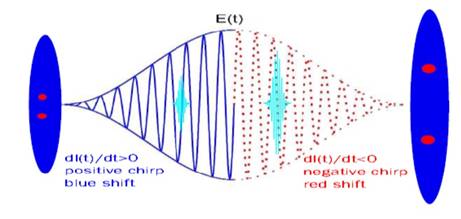Prof. XueBin Bian in WIPM has made progress in molecular high-order harmonic generation (MHOHG) in collaboration with Prof. Andre D. Bandrauk in Universite de Sherbrooke in Canada. Their work has been published in Physical Review Letters 113, 193901 (2014): http://journals.aps.org/prl/abstract/10.1103/PhysRevLett.113.193901
High-order harmonic generation has received a lot of attention since it provides an important tabletop XUV source to investigate ultrafast electronic dynamics. However, numerical solutions of the time-dependent Schrodinger equations (TDSE) in 3D are very challenging so far. Prof. Bian is devoted to numerical simulations of ultrafast processes during laser-matter interactions. He developed a parallel software independently to solve TDSE accurately in full dimensions. The computation costs 480 CPU cores running for ten days. During the interactions between intense laser pulses and linear molecules, it was found by Prof. Bian that not only amplitude modulation (AM) reported before, but also obvious frequency modulation (FM) occurs in MHOHG.
FM is superior to AM in some aspects. AM in MHOHG cannot be used in the lower-order perturbative regime or the vicinity of cutoff energy of harmonics. Additionally, two-center interference, resonant harmonic generation, may lead to strong AM in MHOHG, which makes it very difficult to retrieve nuclei dynamics by AM. FM is comparably stable. Once the interculear-distance R-dependent ionization rate is known, the nuclei dynamics can be retrieved by FM as demonstrated in this work.
This theoretical work has provided the mechanism of FM encoding ultrafast processes in molecules. It also provides how to decode the information from FM. FM in MHOHG has not been reported experimentally. This work may stimulate experimental studies on FM in strong-field physics.
This work is supported by National Natural Science Foundation (No. 11404376) .

Fig. Illustration of the mechanism of FM in MHOHG. During the interactions of short laser pulses and linear molecules, the internuclear distance increases, which leads to bigger ionization rate at the falling part of the laser pulses. Net redshift in MHOHG occurs due to the unbalance of the harmonic signals.